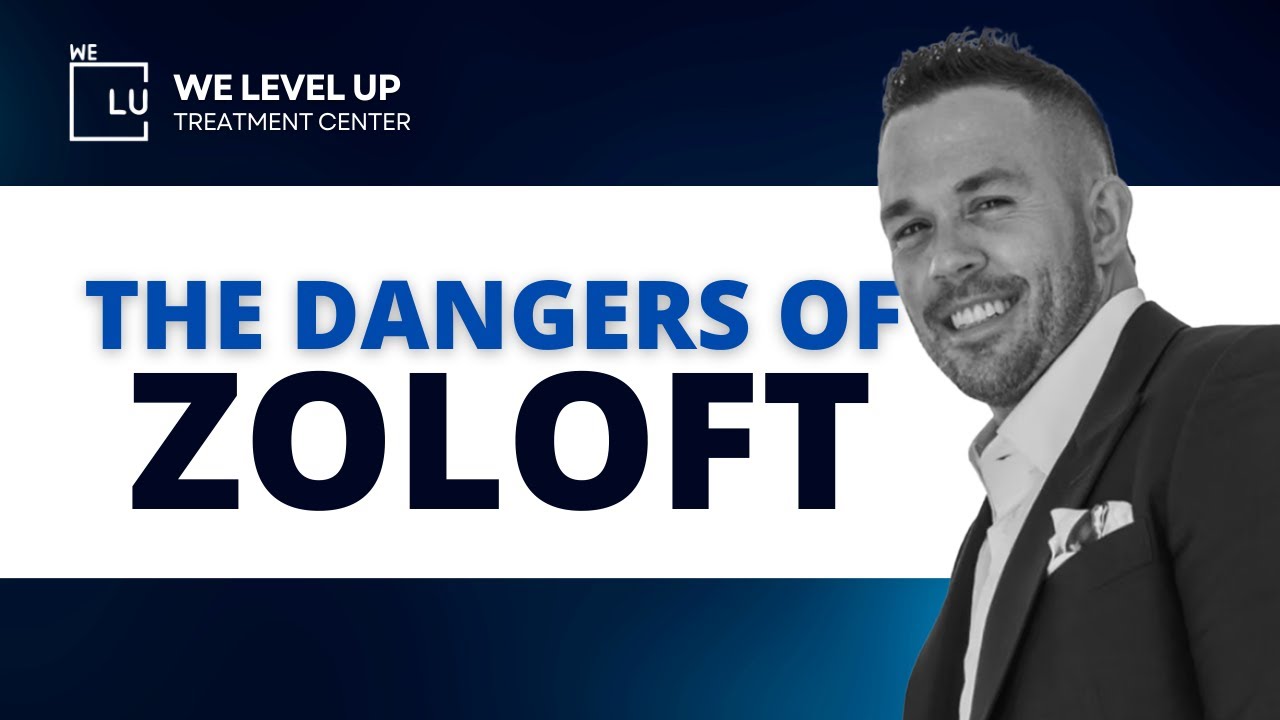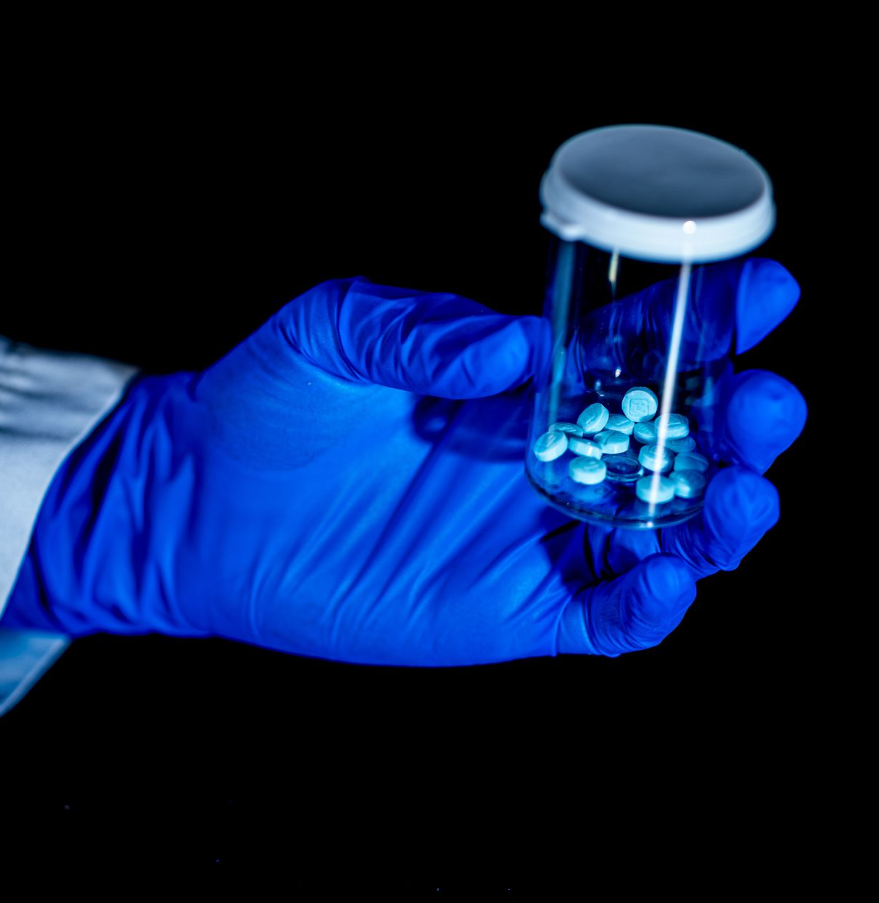What Is ADHD? ADHD Paralysis Meaning
Attention Deficit Hyperactivity Disorder (ADHD) is a mental health condition affecting the brain, causing challenges in attention and behavior regulation. According to the National Institute of Mental Health, approximately 15 million individuals in the United States grapple with ADHD, with a higher prevalence observed in males compared to females.
Recognized by the American Psychiatric Association (APA) as a medically and legally treatable condition, ADHD can impede one’s ability to sustain attention and complete tasks, potentially leading to strained relationships, diminished work performance, and increased susceptibility to conditions like depression and substance abuse. Timely identification is crucial, as effective ADHD treatment is achievable.
The phenomenon known as ADHD paralysis manifests as an inability to focus, concentrate, or fulfill responsibilities. This symptom often emerges when individuals feel overwhelmed by their environment or circumstances, resulting in a “brain crash” and hindered functionality. Consequently, ADHD paralysis can significantly impact personal, professional, and daily aspects of life.
ADHD Symptoms
ADHD might go undiagnosed until adulthood when the condition wasn’t recognized during earlier years by teachers or family members.
As the demands of adulthood escalate, the symptoms of ADHD can intensify. These manifestations may include challenges in completing tasks, difficulties in listening to others, struggles in organizing projects or responsibilities, forgetfulness, persistent fidgeting, an inability to control speech or actions, and frequent misplacement of personal items.
In addition to these symptoms, individuals with ADHD may exhibit clumsiness, experience sleep disturbances, and grapple with temper tantrums and mood swings. Socializing and forming connections may pose challenges, and the manifestations and progression of ADHD can differ significantly from person to person.
Types of ADHD
ADHD is a prevalent mental disorder with distinct variations, categorized as either the inattentive type or the hyperactive-impulsive type.
Inattentive Type
Individuals with this type frequently experience difficulty maintaining focus, leading to distractions and a tendency to deviate from the task at hand. Diagnosis typically requires the presence of at least six of the following nine symptoms:
- Making careless mistakes
- Failing to pay attention and stay on task
- Not listening
- Being unable to follow or understand instructions
- Avoiding tasks that involve effort
- Being easily distracted
- Being forgetful
- Losing things essential for task completion
Hyperactive-Impulsive Type.
For the hyperactive-impulsive type, an individual should exhibit six or more of the following symptoms:
- Fidgeting
- Squirming
- Getting up frequently when seated
- Running or climbing at inappropriate times
- Having difficulty playing quietly
- Talking excessively
- Talking out of turn or blurting out
- Interrupting


Skip To:
Learn More:
- What is Inattentive ADHD? Symptoms, Causes, & Treatment
- ADD Vs ADHD, What Are The Differences & Similarities?
- The Three Types of ADHD: Inattentive, Hyperactive-Impulsive, and Combined
- Mental Health Assessment for Mental Illness Treatment
- Mental Health Treatment. Warning Signs, Types of Treatment, Therapies, Medications & How To Get Help.
Combined Type
The Combined Type signifies the presence of symptoms from both the inattentive and hyperactive-impulsive types. In contrast, the Predominantly Inattentive Type indicates the person solely exhibits symptoms of the first type. The journey to an accurate diagnosis often involves individuals traversing through various stages, and it’s not uncommon for someone diagnosed with primary inattentiveness to be informed of having ADD or another related disorder. There is ongoing debate among experts regarding these distinctions.
ADHD types exhibit variations in severity. With appropriate medication, many individuals find effective ways to cope with the challenges posed by this disorder. However, it’s essential to note that improper medication usage may lead to overdose and consequential serious outcomes. While Types of ADHD differ among individuals, they can be effectively managed with proper attention and care.
Make this your opportunity to reclaim your life. Call We Level Up Texas ADHD Treatment 24/7 for consultation. Every call is free and confidential.
Get Help. Get Better. Get Your Life Back.
Searching for Accredited Drug and Alcohol Rehab Centers Near You? We Level Up Texas Is Opening Soon!
Even if you have failed previously and relapsed, or are in the middle of a difficult crisis, we stand ready to support you. Our trusted behavioral health specialists will not give up on you. When you feel ready or just want someone to speak to about therapy alternatives to change your life call us. Even if we cannot assist you, we will lead you to wherever you can get support. There is no obligation. Call our network hotline today.
FREE Addiction Hotline – Call 24/7ADHD Fact Sheet
ADHD Overview
A persistent condition marked by impulsivity, hyperactivity, and difficulty sustaining attention, ADHD often emerges in early childhood and may persist into adulthood. It can affect self-esteem, relationships, and performance in academic or professional settings. Key symptoms include limited attention span and hyperactivity. Treatment approaches typically involve talk therapy and medication.
ADHD Symptoms
Behavioral symptoms may include aggression, excitement, fidgeting, hyperactivity, impulsivity, irritability, a lack of self-control, or repetitively repeating words or actions.
Cognitive indicators encompass a short attention span, forgetfulness, difficulty focusing, absentmindedness, or other mental symptoms.
Mood-related manifestations may involve hostility, worry, boredom, enthusiasm, or mood swings.
Additionally, depression and learning disabilities are common occurrences.
ADHD Treatment
Support Group: A gathering where individuals with a shared condition or goal, such as weight loss or depression, come together to receive counseling and share their experiences.
Cognitive Behavioral Therapy: A therapeutic approach focused on altering negative attitudes, behaviors, and emotions associated with mental distress through conversation.
Counseling Psychology: A specialized branch of psychology addressing self-related issues linked to work, school, family, and social life.
Anger Management: Techniques aimed at reducing harmful emotional outbursts through mindfulness, coping skills, and trigger avoidance.
Psychoeducation: Mental health education designed to provide support, validation, and empowerment to individuals.
Family Therapy: Psychological counseling aimed at enhancing family communication and conflict resolution.
ADHD Statistics
The CDC analyzes data from parent surveys and medical claims to comprehend how attention-deficit/hyperactivity disorder is diagnosed and treated (ADHD). Depending on the source, estimates for diagnosis and therapy can differ.
6 Million
The estimated number of children aged 3–17 years ever diagnosed with ADHD, according to a national survey of parents, is 6 million (9.8%) using data from 2016-2019.
Source: Centers for Disease Control and Prevention
62%
A national parent survey from 2016 reported on medication and behavior treatment for children 2–17 years of age with current ADHD 62% were taking ADHD medication
Source: Centers for Disease Control and Prevention
15 Million
ADHD affects an estimated 15 million people in America.
Source: National Institute of Mental Health
What is ADHD Paralysis in Adults? ADHD Paralysis Definition
ADHD paralysis, also known as analysis paralysis in ADHD, refers to the challenge of concentrating, maintaining focus, or completing tasks when affected by ADHD. This symptom often presents as a cognitive “crash,” resulting in reduced functionality when an individual feels overwhelmed by their environment or circumstances. Consequently, ADHD paralysis can have a profound impact on personal, professional, and daily life.
Individuals with ADHD frequently contend with physical, mental, or emotional exhaustion. Adults with ADHD may have grappled with the negative stereotypes associated with their symptoms, such as being labeled as procrastinators or lazy, from a young age. It’s important to note that the response of an ADHD brain to stress differs from that of a neurotypical brain.
The paralysis linked to ADHD poses challenges in fulfilling responsibilities. Many routine tasks necessitate sustained attention and focus, which can be difficult to achieve during episodes of ADHD paralysis. In a fast-paced society, neurodiverse individuals often find it challenging to keep up with their obligations.
ADHD paralysis goes by various names, including choice paralysis ADHD, decision paralysis ADHD, ADHD mental paralysis, task paralysis ADHD, time paralysis ADHD, ADHD analysis paralysis, ADHD choice paralysis, ADHD procrastination paralysis, ADHD scrolling paralysis, anxiety paralysis ADHD, mental paralysis ADHD, ADHD time paralysis, ADHD brain paralysis, ADHD indecision paralysis, and ADHD overwhelm paralysis.

Is ADHD Paralysis Real? ADHD & Executive Function
Executive functioning encompasses the cognitive skills necessary for various daily brain functions, encompassing an individual’s ability to concentrate, apply effort, retain information, control emotions, organize tasks, and maintain self-awareness.
Executive dysfunction is the term employed to characterize the deficiency in planning, organizing, and problem-solving skills observed in individuals with ADHD. While the outcomes may differ among individuals, the impairment of these vital mental capacities serves as the foundational factor contributing to the defining characteristics of ADHD.

Get Your Life Back
Find Hope & Recovery. Get Safe Comfortable Detox, Addiction Rehab & Dual Diagnosis High-Quality Care.
FREE Addiction Hotline – Call 24/7ADHD Paralysis vs Procrastination
Procrastination and ADHD paralysis are distinct conditions with notable differences. Procrastination involves a conscious decision to delay or disregard responsibilities until the last moment. This behavior can somewhat affect anyone, stemming from the need for occasional breaks. In contrast, ADHD paralysis arises from cognitive overload and dysfunction.
It’s essential to dispel the misconception that individuals with ADHD are inherently sluggish or overly reliant on their condition. Someone with ADHD may encounter challenges focusing on a conventional nine-to-five job, leading to frequent mental breaks, irritability, or complete shutdown when overburdened. Despite lacking control over these responses, colleagues and superiors might perceive such behaviors as irresponsible. Furthermore, the occurrence of ADHD paralysis is notably influenced by the surrounding environment.
The rigid structure of a traditional office setting can adversely impact individuals with ADHD. Conversely, those working from home possess greater autonomy to manage their time and delegate tasks. This environment allows better control over stimuli that may trigger executive dysfunction or paralysis. In essence, ADHD paralysis is an involuntary response to stress rather than a deliberate choice.
ADHD Paralysis vs Depression
Depression and ADHD paralysis share certain signs, creating similarities in the challenges they pose. In cases of depression, individuals may find it challenging to derive pleasure from activities they once enjoyed. The constant feelings of hopelessness and depression may lead them to postpone initiating projects or working on tasks, hindering their ability to make progress.
These symptoms bear a resemblance to the paralysis-like manifestations observed in ADHD. It is crucial, however, to differentiate between depression and ADHD paralysis. The key distinction lies in the root causes of difficulty initiating or completing tasks. While both conditions can impede decision-making and task completion, individuals experiencing depression often grapple with difficulties across various aspects of life. In contrast, those with ADHD typically face minimal challenges when engaging in activities they find interesting but may become distracted and paralyzed when confronted with less enjoyable tasks.
ADHD and Sleep Paralysis
The co-occurrence of sleep paralysis and ADHD is observed in some children, particularly those displaying symptoms akin to narcolepsy. These symptoms include heightened daytime sleepiness, the sudden loss of muscle tone triggered by intense emotions (cataplexy), hallucinations, and instances of sleep paralysis.
Studies reveal that approximately twice as many children with narcolepsy also experience ADHD. Furthermore, research suggests that managing ADHD symptoms with medication may pose greater challenges for children who concurrently grapple with narcolepsy.
ADHD Paralysis Vs Executive Dysfunction
Distinguishing Factors:
- Scope of Concept:
- ADHD paralysis is a specific manifestation within the ADHD framework, primarily associated with the challenges of initiating and completing tasks.
- Executive dysfunction is a more comprehensive term that extends beyond ADHD and encompasses a range of difficulties related to executive functions.
- Underlying Conditions:
- ADHD paralysis is linked explicitly to Attention Deficit Hyperactivity Disorder.
- Executive dysfunction can be associated with various conditions, including ADHD, autism spectrum disorders, traumatic brain injuries, and mental health disorders.
- Functional Impact:
- ADHD paralysis tends to impact task execution and completion, leading to a sense of mental immobility.
- Executive dysfunction can affect a broader range of cognitive functions, influencing overall behavior, decision-making, and adaptive functioning.
- Diagnostic Context:
- ADHD paralysis is often discussed in the context of ADHD diagnosis and management.
- Executive dysfunction may be considered in a more general diagnostic framework, examining cognitive challenges across different conditions.
Opening Soon! First-Class Facilities & Amenities
World-Class High-Quality Addiction & Mental Health Rehabilitation Treatment
Coming Soon! Rehab Centers TourRenowned Addiction Centers. Serene Private Facilities. Inpatient Rehab Programs Vary.
FREE Addiction Hotline – Call 24/7Proven recovery success experience, backed by a Team with History of:
15+
Years of Unified Experience
100s
5-Star Reviews Across Our Centers
10K
Recovery Success Stories Across Our Network
- Low Patient to Therapist Ratio
- Onsite Medical Detox Center
- Comprehensive Dual-Diagnosis Treatment
- Complimentary Family & Alumni Programs
- Coaching, Recovery & Personal Development Events
Do I Have ADHD Paralysis? ADHD Paralysis Symptoms in Adults

Untreated ADHD symptoms can significantly impact various aspects of an individual’s daily life, influencing social well-being, interpersonal interactions, and decision-making abilities, in addition to affecting occupational functioning. The intensity of ADHD paralysis symptoms may vary depending on the individual and the circumstances, but they generally manifest as a pattern of mental immobility and shutdown.
The following catalog outlines potential indicators of ADHD paralysis or decision paralysis related to ADHD:
- Brain fog: Lack of focus or mental clarity
- Exhaustion
- Brain “freezes”: Limited functionality due to executive dysfunction
- Irritability
- Social isolation
- Poor time management
- Time blindness: An inability to sense the passing of time
- Distraction
- Emotional lability: Rapid changes in mood, emotions, or feelings
- Inability to make decisions
Types of ADHD paralysis (ADHD Task Paralysis)
ADHD is associated with three distinct forms of paralysis: mental, task, and decision paralysis. These categories help elucidate the specific aspects of executive functioning impacted by ADHD symptoms. Depending on the circumstances or stimuli during an episode, individuals with ADHD may contend with one or a combination of these paralyses over the course of their lives.
The classifications of ADHD paralysis encompass:
- Mental paralysis: This occurs when the brain experiences a shutdown or becomes “foggy,” rendering it unable to tolerate further stimulation.
- Task paralysis: This involves the inability to initiate or complete a task. Individuals grappling with task paralysis may procrastinate by zoning out or repetitively revisiting already finished tasks, leading to prolonged hours spent on seemingly simple assignments due to this sense of powerlessness.
- Choice paralysis: Also known as “analysis paralysis,” this form arises when individuals overthink or struggle to make decisions, especially when faced with an array of options. This challenge is particularly prevalent when a person with ADHD perceives an overwhelming number of choices.
Opening Soon! World-class, Accredited, Anticipated 5-Star Reviewed, Effective Addiction & Mental Health Programs. Complete Behavioral Health Inpatient Rehab, Detox plus Co-occuring Disorders Therapy.
FREE Addiction Hotline – Call 24/7End the Addiction Pain. End the Emotional Rollercoaster. Get Your Life Back. Start Drug, Alcohol & Dual Diagnosis Mental Health Treatment Now. Get Free No-obligation Guidance by Substance Abuse Specialists Who Understand Addiction & Mental Health Recovery & Know How to Help.
How to Stop ADHD Paralysis? How to Break ADHD Paralysis?
Navigating ADHD paralysis can be challenging, but with the appropriate care and therapy, you can effectively manage its symptoms. Additionally, incorporating various self-coping strategies can aid in handling challenging and stressful situations. While these techniques may take time to initiate and sustain, they can be instrumental in navigating moments of ADHD immobility.
Consider these eight tips to overcome ADHD paralysis and regain control:
1. Write Everything Down
Maintaining organization is crucial for individuals with ADHD. A practical method for tracking obligations is to input events, projects, or commitments into a calendar. If this feels overwhelming, start by jotting them down and keeping the notes nearby for later reference. Staying vigilant about essential tasks prevents future challenges and alleviates stress, as the frustration of forgetting them is minimized. Moreover, maintaining a journal is an excellent way to track thoughts throughout the day.
2. Break Down Tasks
Whenever possible, aim to structure your tasks to allow for occasional breaks. Even in demanding occupations where flexibility may seem limited, starting with small steps and proceeding with care is essential. Regardless of the task’s size, checking items off your to-do list can evoke a sense of accomplishment. Given the tendency of the ADHD brain to magnify the importance of functions, it’s important to remind yourself to step back periodically and reassess your approach.
3. Designate Project Time
Estimating the time required for task completion can pose a challenge for individuals with ADHD. To navigate this, it is recommended to allocate dedicated time for one task at a time, especially if you have encountered ADHD paralysis before. While this approach may initially appear counterproductive, the aim is to work with the brain’s dynamics. With experience, you’ll develop effective strategies for specific tasks, streamlining subsequent, more complex activities.
4. Don’t Make Perfection the Goal
While individuals with ADHD are not inherently “lazy,” they often find themselves shouldering more responsibilities than they can effectively handle. To mitigate this, consider differentiating between your values and objectives. For example, if you aim to demonstrate your worth within a company, you may inadvertently take on an excessive workload.
However, assessing whether these objectives align with your ethical principles is crucial. Will the quality of your work meet your own standards? Achieving a balance between your performance and output hinges on finding harmony between your values and goals.
5. Schedule Rewards
Allocating time to recognize your achievements can provide the motivation necessary to complete a task. Rewards need not be extravagant; they could be as simple as treating yourself to a coffee or acquiring a new pair of shoes after work. Fixating too much on uncompleted tasks may only result in unnecessary tension and anxiety.
6. Take Movement Breaks
Enhance mental, emotional, and cognitive stimulation by taking breaks and engaging in movement. The brain can quickly grow bored or tired, so it’s essential to be mindful of and honor your limits. When you sense your brain becoming overtaxed, it’s advisable to pause. A brief outdoor meditation session or a brisk stroll around the workplace qualifies as a beneficial movement break.
7. Work Novelty Into Your Day
Monotony can impede productivity, making it beneficial to introduce freshness into your daily routine, even in small doses. Consider dedicating one day each week to trying something new at work or school. This could involve rearranging your desk, taking a half-day off, or exploring a new restaurant near your workplace. Similarly, at home, experiment with novelty by trying a new cuisine or exploring music from a different artist.
8. Find What Energizes You
Discover a habit that energizes you and makes it a consistent routine. Exploring a new hobby or activity can help reignite your enthusiasm if your daily schedule drains your motivation. While this might feel challenging during moments of paralysis, it’s essential to recognize that ADHD paralysis often occurs when your brain is signaling a need for stimulation or change. Instead of ignoring these cues, consider honoring them—you may uncover your true passions.
Start a New Life
Begin with a free call to an addiction & behavioral health treatment advisor. Learn more about our dual-diagnosis programs. The We Level Up treatment center network delivers recovery programs that vary by each treatment facility. Call to learn more.
- Personalized Care
- Caring Accountable Staff
- World-class Amenities
- Licensed & Accredited
- Renowned w/ 100s 5-Star Reviews
We’ll Call You
ADHD Paralysis Medication & ADHD Paralysis Treatment – ADHD Paralysis Help
Typically, ADHD symptoms are addressed with prescription medication. While maintaining a consistent medication schedule is essential, engaging with a therapist can also prove beneficial on occasion. Tailored to your circumstances and lifestyle, therapy offers valuable insights into managing ADHD symptoms.
A qualified therapist can help identify the areas of your life that need the most attention. Therapists who affirm neurodiversity are well-versed in the intricate interplay of emotions and cognition, particularly relevant for individuals with ADHD. Utilizing an online directory, you can swiftly find a therapist suited to your needs.
We Level Up Texas Dual Diagnosis Treatment
The precise definition of dual diagnosis, or co-occurring disorders, may vary among institutions. However, it generally refers to the specialized treatment of individuals diagnosed with both a substance use disorder and a mental health disorder simultaneously.
Addressing dual-diagnosis clients is a crucial component of our inpatient treatment experience, given the strong correlation between co-occurring disorders and substance abuse. Crafting a comprehensive treatment plan involves tackling the physical aspects of withdrawal, understanding the psychological ties to drug use, and effectively managing underlying mental health disorders, all aimed at setting clients up for success.
A thorough mental health assessment identifies potential treatment options. Collaborating with mental health counselors and medical care providers provides behavioral therapy and medication treatment access.
At our dual diagnosis treatment center, We Level Up Texas ensures the highest quality of care. We acknowledge the intricate interplay of mental and substance abuse disorders, recognizing the potential for a vicious cycle of addiction. We offer specialized treatment for dual-diagnosis cases, providing the best chance for genuine healing and enduring recovery.
Acknowledging that one may be living with a mental illness can be challenging, but with proper diagnosis and treatment, addressing the concurrent issue of substance abuse becomes significantly more manageable. Only a qualified medical professional can diagnose these underlying conditions. If you suspect you are dealing with a disorder alongside addiction, we encourage you to seek a qualified treatment center to embark on your journey to recovery. Call We Level Up Texas today.






